Organized by Hao-Cheng
Campus Interview
 |
||
|
||
|
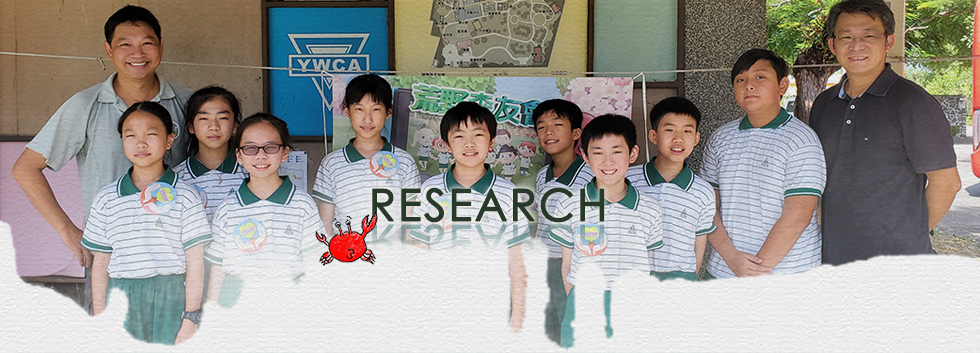
 |
||
|
||
|
| 1. | What practical actions can elementary students take to protect the environment on a daily basis? (I-Chia) |
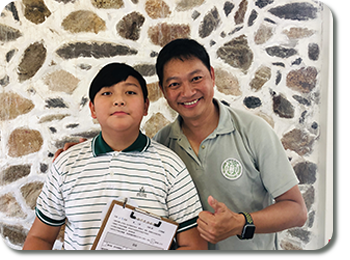
Every student must take initiative on his / her own. Students should not be afraid to take action despite limited capability. The most basic and environmentally friendly thing that we can do is to recycle reusable resources. Secondly, we can reduce the use of plastic products. For example, we can either reduce the use of plastic bags or use reusable bags for carry-outs. Although it can be a bit troublesome, as long as we can start changing our daily habits, the amount of plastic waste can be reduced. Finally, we also need to go outdoors to get close to and learn about nature. Not damaging the environment and not littering are things that students can do.
| 2. | Does the discovery center currently offer a job description for volunteer service? (Tzu-Ning) |

In regard to volunteer service, the center designs the job content according to different levels such as elementary, junior high, and senior high. At the elementary level, there is a “Tool Master” course that the students can learn the skills to use basic tools to make environmentally friendly carpentry products such as bird feeder, nest for bats, and insect hotels. The result has been positive and very encouraging. Last year we discovered there were Scops owl living and even laying 4 eggs in the nest that we made. At the junior high level, with the motto of “Service & Learn, Love will Shine”, the main focus is to provide community service and support to Yilan’s NGOs. For example: Huasha Social Welfare Foundation and Ren-Ai Senior Citizens’ Home provide caring service to elderly people living alone. Furthermore, there are other volunteering activities such as beach cleanup, ecological works such as organizing and farming at Shuanglianpi in Yilan. At senior high level, we organize volunteer activities for urban-rural exchange in the Fuhsing district of Taoyuan.
| 3. | Each SOW volunteer has picked his / her wild name. What would you choose for your wild name? (Shih-Chi) |
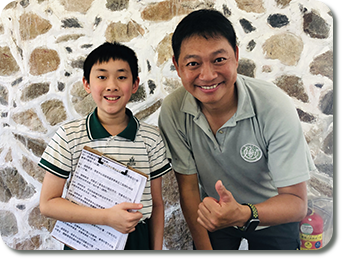
If I were a SOW volunteer, I would choose “Common Tree Fern” as my wild name. There was a time when I was at the Wanli campus, I was deeply touched by the scenery when the setting sun shone on a field of Common Tree Fern. Common Tree Fern is a type of fern, the trunk can be up to 20 meters and slim like a penholder. It is also called “living fossil” because its existence can be traced back to 360 million years ago, which was during the Jurassic period. I also happen to be very interested in dinosaurs, which is another reason why I like Common Tree Fern.
| 4. | Do you think that through the efforts made by SOW this year, is the general public’s education on marine environment protection sufficient? (Chia-Kai) |
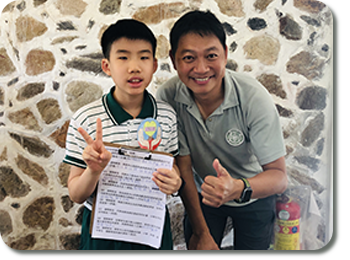
When we took the students to clean up the beach, we had realized that it is impossible to pick up all the garbage. If we can negotiate with the fishermen to set up a place to dispose of the garbage, then the littering problem may be solved. This is something that can be done, but still requires some time and organization to tie up the loose ends. Therefore, I think SOW has done a superb job toward a better marine environment. Each activity includes practical experience through games, which has raised Taiwan’s marine awareness and literacy. Combined with promotion via the media, more people can learn how to maintain the marine environment, which is definitely a positive effect.
| 5. | If the discovery center plans a learning activity on wetland habitat, what will be your expectations for students’ learning curve? (Tzu-Chun) |
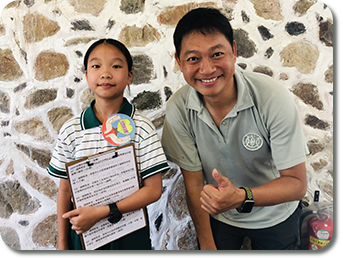
For elementary level, our plan is to provide sensory experience and local connections. Our discovery center is currently located at YWCA’s TingTao Camp in Toucheng Township. Do you remember that in the first grade the teachers took you guys to observe and learn about hermit crabs? Many tourists go to the beach and pick up shells, which forces hermit crabs to use garbage as their homes. In addition to teaching students not to take anything from the beach’s ecosystem, the teachers also tell the students to wash the shells after eating and put the shells back to the beach so hermit crabs can have new homes. This is something everyone can do. Furthermore, we hope that everyone will have more passion and sense of mission toward our future beach cleaning activities and protecting wetlands.For elementary level, our plan is to provide sensory experience and local connections. Our discovery center is currently located at YWCA’s TingTao Camp in Toucheng Township. Do you remember that in the first grade the teachers took you guys to observe and learn about hermit crabs? Many tourists go to the beach and pick up shells, which forces hermit crabs to use garbage as their homes. In addition to teaching students not to take anything from the beach’s ecosystem, the teachers also tell the students to wash the shells after eating and put the shells back to the beach so hermit crabs can have new homes. This is something everyone can do. Furthermore, we hope that everyone will have more passion and sense of mission toward our future beach cleaning activities and protecting wetlands.
| 6. | What are your afterthoughts each time you take the students to complete a beach cleaning activity? (Yu-Chen) |
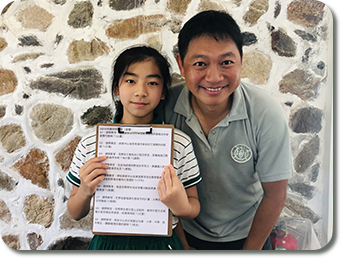
It is actually very tiring after each beach cleaning activity, but the sense of accomplishment significantly outweighs the physical challenge. Although we pick up a lot of garbage after each cleanup, the garbage continues to reappear before the next cleanup. However, the amount of garbage has been decreasing with an increasing number of beach cleanings. Taking students to clean the beach and providing education on environmental protection and plastic reduction, it is like planting a little ocean loving seed in students’ hearts. Regardless whether such seeds will germinate in the future, I sincerely hope that the ocean loving hearts will have much better development.
| 7. | In regard to the eco-city plan emphasized by the SOW, where can elementary students start if they want to take part in the plan? (Bo-Hsiang) |
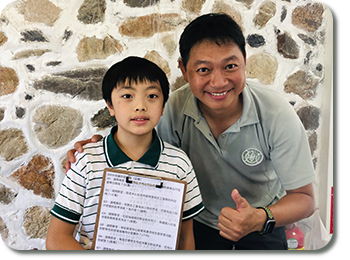
Elementary students can start by getting to know the city they live in. We can see how committed the city is in terms of ecological planning by looking at how many agricultural products or afforestation places are in the city. For example, living in Taipei City, we know that Daan Forest Park is where the largest green field in the city, and Muzha is where the tea is produced. Taipei City is still filled with urbanization characteristics. So we must first understand our own city, and then you can walk around the city to choose what is the most beautiful place or scenery in the city. The most important thing is that such sensational feelings can become the driving force to push you to do something for the city in the future.
| 8. | When you take your students to hiking activities, what would you do to have everyone to cherish natural resources and protect the environment? (Hsin-Ai) |
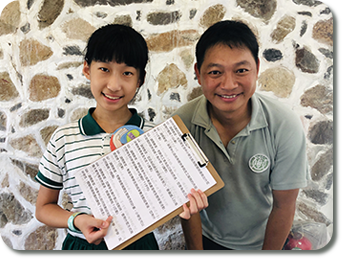
Starting from 1st grade, we have designed a series of outdoor events to get close to the natural environment and to promote environmental education. For example, during our hiking trips, we stay on the trail and do not take any shortcuts to minimize possible impacts to the environment. At the same time, we clean up our own waste before we leave, we do not litter and always take the garbage with us to maintain a clean environment. We call this “gift to the mountain”. Although there are many volunteers who help to clean up the environment in National Parks, we should try our best to take away any waste we have produced and leave no burden on the natural environment.
| 9. | How does the discovery center plan experimental environmental protection courses for kindergarten, elementary, middle, and high school students? (Hao-Cheng) |
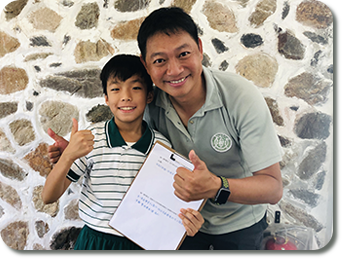
The discovery center designs courses based on different age levels. From kindergarten to 2nd grade, the course is mainly about sensory play and experiencing the natural environment. The primary goal is to get children to like the natural environment. Starting from 3rd and 4th grade, knowledge-based learning is added. The course also collaborates with regular science class with outdoor observation of whether the plant is alternate or opposite, which type of insect is bigger, and the impact and effect of air pollution on animal survivorship, etc. When we reach 5th and 6th grade, the students will be able to participate in environmentally friendly activities such as making nests for owls to settle in. After 6th grade, students can start protecting the environment through actual participation in environmental works.
The Discovery Center of Taipei Fuhsing Private School was established in 2000 at Wanli Campus. It was moved to Toucheng Campus in Yilan. Over the past 10 years, Director Chan had led countless children into the wilderness to experience the natural environment. The planning of the school’s discovery programs also used SOW’s activities as reference. For example, the recording sheet used in beach cleanup activity, making a nest box for owls, and Grade 8 students’ participation in Shuanglianpi’s wetland conservation work, etc. We made an effort to combine SOW’s ecological concepts with the regular curriculum of our school to further expand the scope of environmental education.
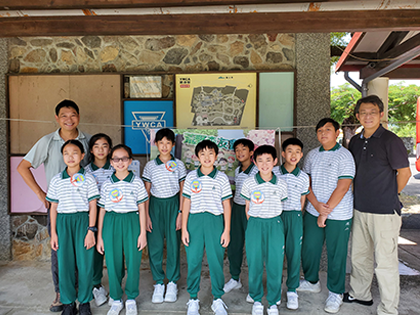
Source: Wilderness Crossing
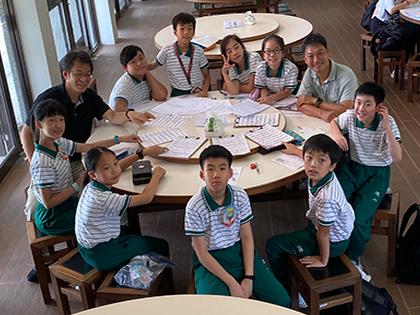
Source: Wilderness Crossing
In recent years, outdoor activities have become an education norm. However, experiential learning should not simply be recreational activities. Director Chan believes that only through collective thinking and reflection, you can truly appreciate, love and care about the environment. We can apply our experience into our classes and daily life, and learn to respect and cherish all species living on Earth. Only through cooperation, altruism, and willingness to share, the environmental protection works can be carried out effectively in the long run.
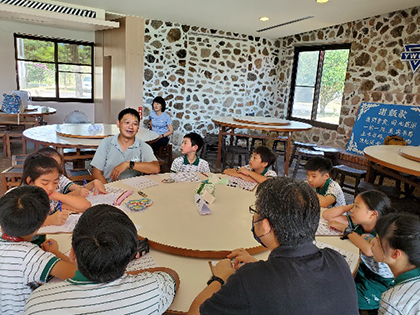
Source: Wilderness Crossing
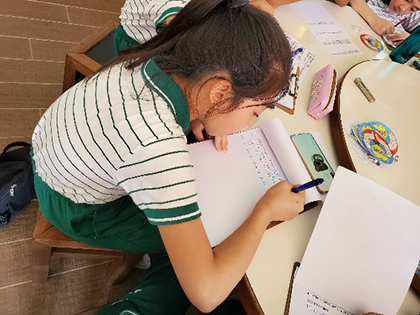
Source: Wilderness Crossing